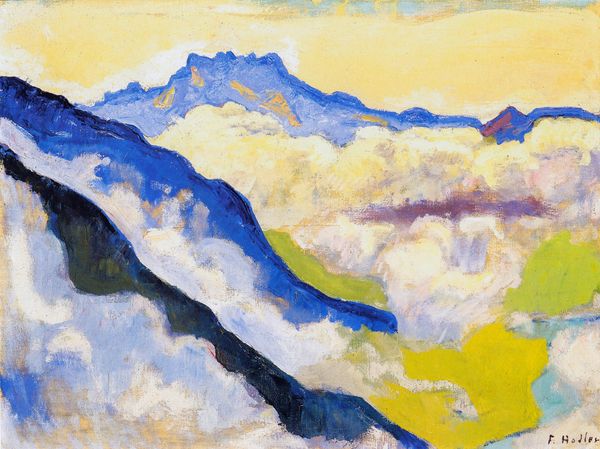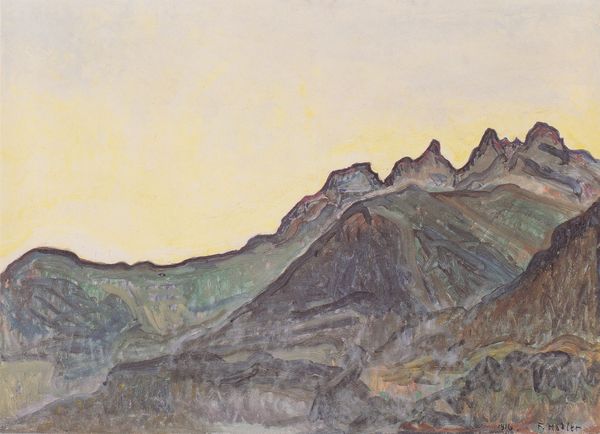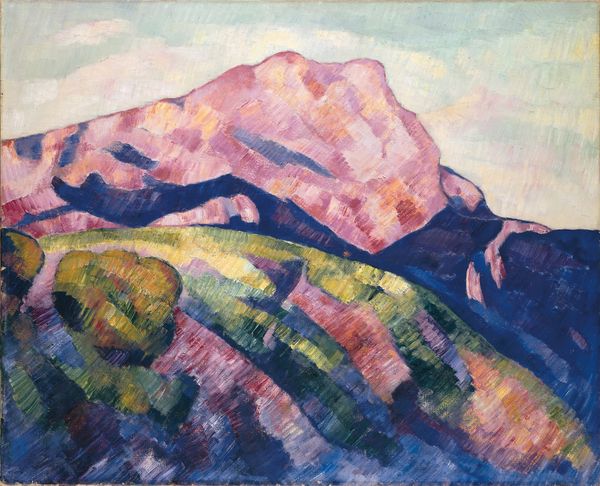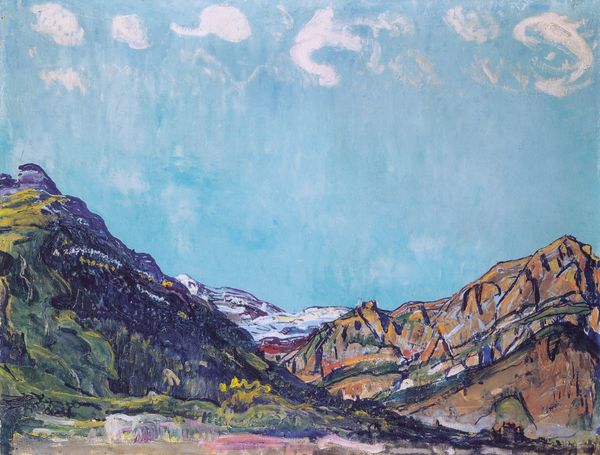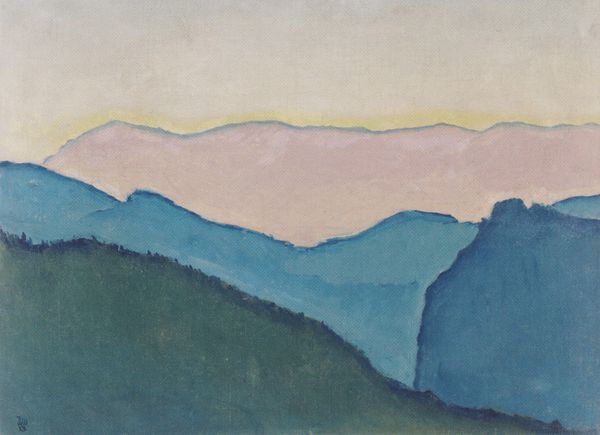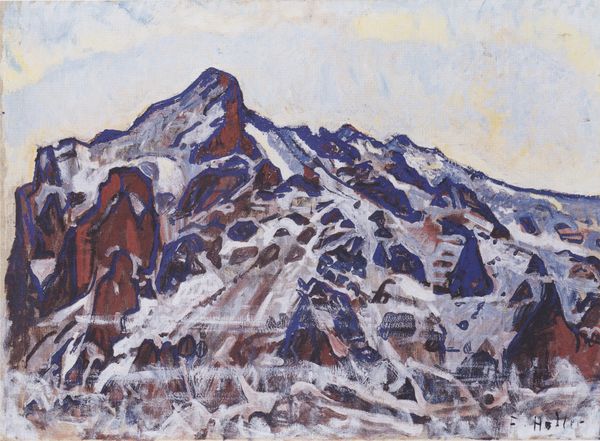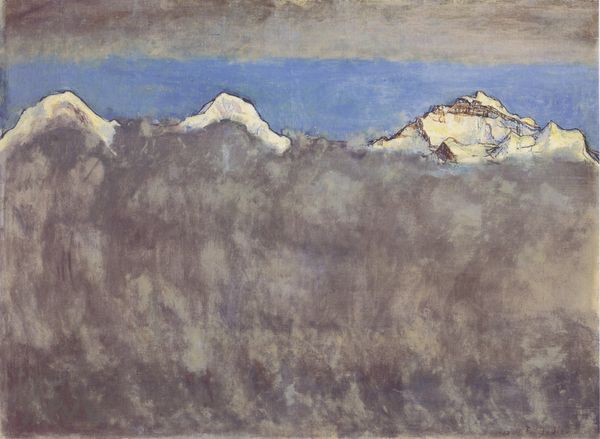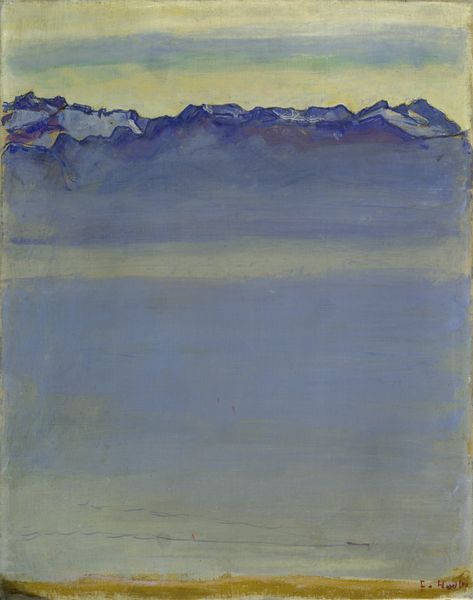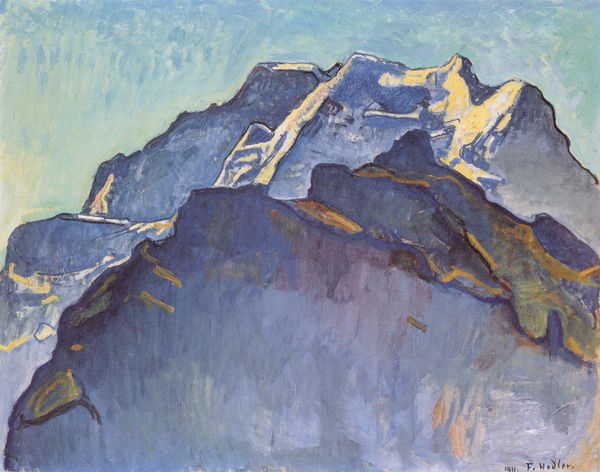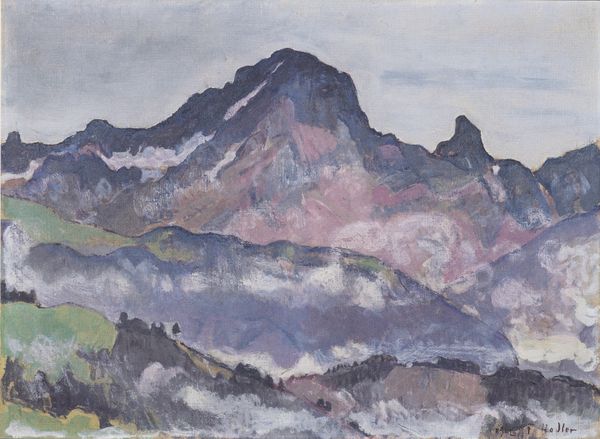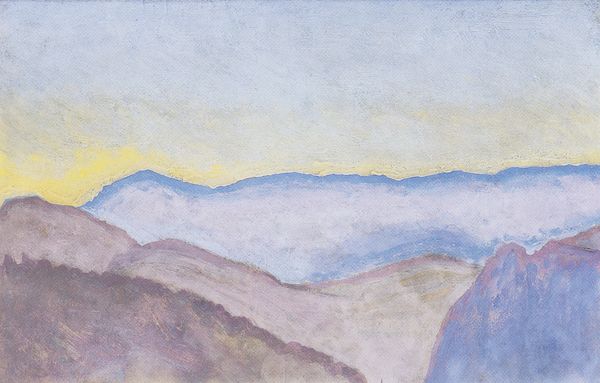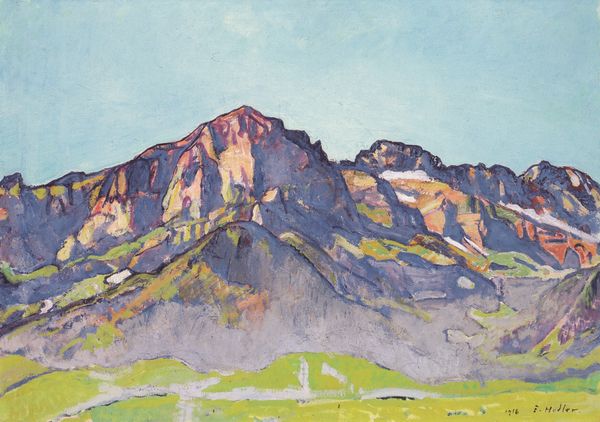
oil-paint, impasto
#
oil-paint
#
landscape
#
oil painting
#
impasto
#
mountain
#
symbolism
Dimensions: 65.5 x 88.5 cm
Copyright: Public domain
Curator: Take a look at Ferdinand Hodler’s 1912 oil painting, "The Dents du Midi from Chesières." Editor: It’s arresting! The palette is quite striking, almost vibrating with those blues and yellows. It evokes a sense of majestic isolation. Curator: Hodler’s career reflects a deep involvement in Swiss national identity through monumental landscape paintings such as this one. This majestic mountain range came to symbolize a powerful ideal. Editor: Symbolism, yes, but the physical act of applying those impasto strokes also creates this raw energy. I’m thinking about the labour, the repetitive gesture that builds up the surface, and then that sheer volume of the paint itself. What statement did that process allow? Curator: Exactly. Hodler developed what he called “Parallelism,” the repetition of forms and colors to convey a sense of unity and order in nature and society. Notice how he has reduced the forms to essential geometric shapes, mirroring each other. He aimed to find order and beauty, a counter-narrative in a pre-war Europe. Editor: Pre-war anxiety definitely pulses in this work! I also wonder if those bold brushstrokes are a product of industrialized production: How has cheap production allowed greater access to tools that build impasto like this? Is he experimenting with that new potential of production and art-making? Curator: That’s an interesting thought! These paintings helped Hodler cultivate a distinctly Swiss artistic identity, linking his work to ideas of national resilience, self-reliance and the almost transcendental power of nature. Editor: Yes, and it's crucial to understand the materials too, this very physicality and visibility of labour. What choices does a national figure make by leaning into a visual aesthetic centered around natural material? Curator: Hodler wanted to connect with a wide audience and become something of a figure for the national identity. And it’s incredible how effectively he captures this. Editor: Absolutely, it’s an incredibly loaded and layered landscape, visually and materially speaking. A striking example of the early twentieth century’s concerns!
Comments
No comments
Be the first to comment and join the conversation on the ultimate creative platform.
